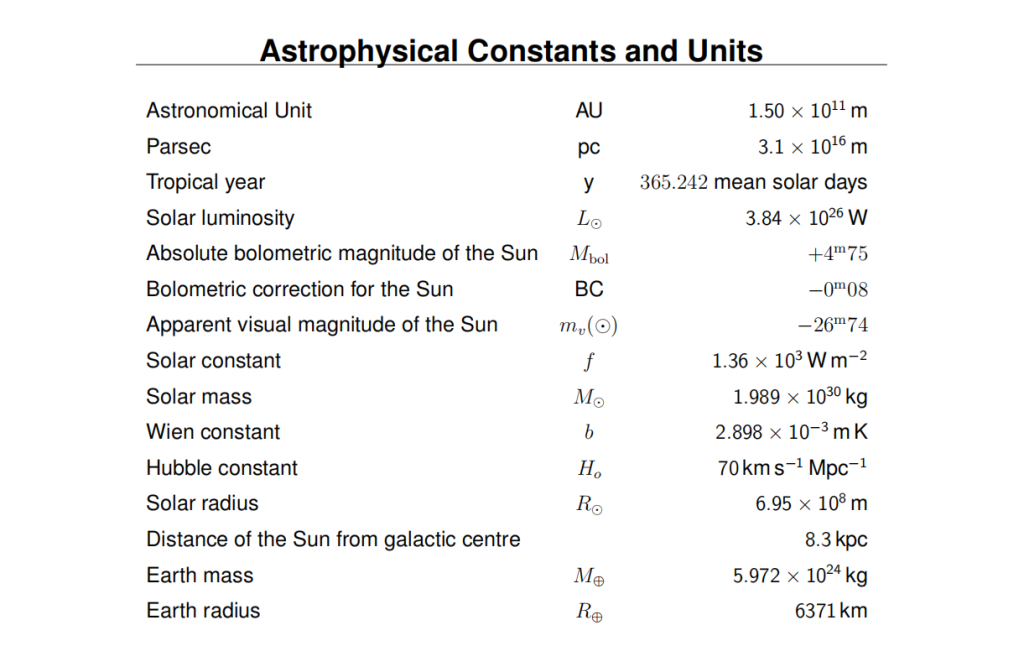天文学和天体物理学代写 Astronomy and Astrophysics代写
677Astronomy and Astrophysics 天文学和天体物理学代写 EXAM DURATION: 2 hours EXAM INSTRUCTIONS: (a) Candidates must attempt ALL questions. (b) Marks for sections and subsections of EXAM DURATION...
View detailsSearch the whole station
天文学代写 ANY CALCULATOR Answer two questions. If you answer more than two questions, credit will only be given for the best two answers. 1. Consider a
ANY CALCULATOR
Answer two questions. If you answer more than two questions, credit will only be given for the best two answers.
Consider a galaxy from which the specific intensity of radiation detected at Earth is given in SI units by

(b) Estimate the arrival rate of photons (in units of m−2 s−1 ) in the J-band from an annulus of width ∆θ = 1’’ at θ = 50’’ centred on a galaxy for which θd = 15’’ and Iν,C = 10−20W m−2Hz−1sr−1 . State and justify all assumptions made.
(c) The surface brightness of the night sky in the J-band is µ ≃14 arcsec−2. Estimate how long it will take to detect the J-band emission from this galaxy in this annulus at a signal-to-noise ratio of SNR = 100 with a telescope of diameter D = 1m. State and justify all assumptions made.
(d) Comment on the feasibility of the observation described in part (c).
(a) Consider a star with a surface temperature similar to the Sun, T = 5800K, that is located at a distance of d = 20 kpc from Earth. Assuming that the surface brightness of the star is well described by the Planck function, estimate the number of photons that arrive at Earth from this star per square metre per second in the U-band.

(c) Comment on the impact of CTI on your answer to part (b).
(d) Comment on, and justify quantitatively, how your answer to part (b) would change if the flat-field observation used in the data processing had typical pixel counts of 1000ADU/pixel.
Consider a telescope with a concave primary mirror of diameter D1 = 5m and f/3 prime focus, with a convex secondary mirror of diameter D2 = 1m and focal length f2 = −9.2m. The secondary mirror is removable, and therefore it is possible to mount instruments at either Prime focus or Cassegrain focus. The focal plane of instruments at Cassegrain focus is typically a distance of 1 m below the primary mirror. The camera available to use at the Prime focus, “PFCam”, comprises ten Charge Coupled Devices (CCDs), each of which has 4096×2048 pixels that measure 25 × 25µm. The camera available to use at the Cassegrain focus, “CassCam”, comprises a single CCD of 1024 × 1024 pixels that measure 10 × 10µm.
(a) Calculate the solid angle that the entire detector array (i.e. all ten CCDs combined) in PFCam subtend on the sky in units of square degrees.
(b) The secondary mirror is located a distance 10 m above the primary mirror. Sketch and label a ray diagram of the telescope when the secondary mirror is in place.
(c) Calculate the solid angle that the CassCam CCD subtends on the sky in square degrees .
(d) Which of CassCam and PFCam do you prefer for detecting a single point source with an apparent magnitude in the i-band of AB = 25, in good seeing of FWHM = 1 arcsec?
(e) Discuss quantitatively the impact on observations with CassCam of being free to choose the distance between the primary and secondary mirror.


Astronomy and Astrophysics 天文学和天体物理学代写 EXAM DURATION: 2 hours EXAM INSTRUCTIONS: (a) Candidates must attempt ALL questions. (b) Marks for sections and subsections of EXAM DURATION...
View details